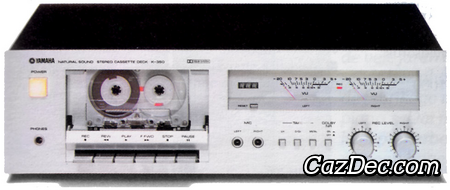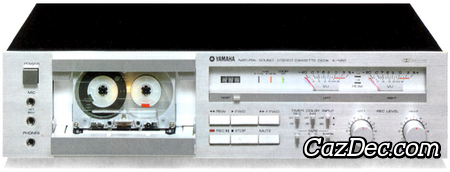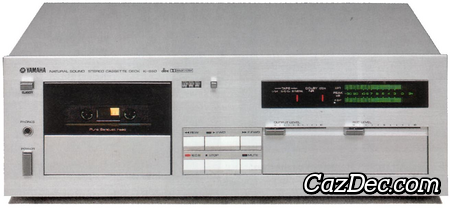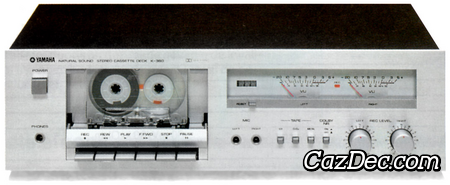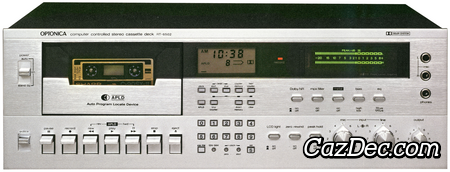
Yamaha K-1d Natural Sound Stereo Cassette Deck

This product is missing a good quality picture. You can provide a picture taken by you from your own deck, or send us scanned picture of this deck taken from the original manufacturer brochure by clicking this text.





The Yamaha K-1d is a stereo cassette deck with Dolby B and DBX noise reduction, it was introduced by Yamaha in 1981.
The main features of the Yamaha K-1d cassette deck are: 2 heads, analog 3 digit tape counter and memory stop, manual tape type selection with support for normal, chrome and metal tapes, belt driven single-capstan transport.
Typical front loading cassette deck with the cassette compartiment located on the left side of the deck. Tape eject is operated mechanically and the cassette needs to be placed with the side to be played facing forward in the cassette well which is opened by a damped mechanism.
Level meters used on the Yamaha K-1d cassette deck are generic digital peak reading meters. Full-logic transport controls used on the Yamaha K-1d let it respond to the slightest finger contact for fast and effortless transport function selection.
The Dolby-B system reduces tape hiss on tapes recorded on the Yamaha K-1d by as much as 10 dB at the highest frequencies. Dbx Type II found in the K-1d is a simplified version of the Type I noise reduction system. The dbx Type II system was designed to be used with systems with limited bandwidth such as cassette based recorders and also uses a simple 2:1:2 compander to reduce noise. A Subsonic filter is provided in the Yamaha K-1d to prevent infrasonic signals generated when playing a warped record. These signals can upset the Dolby system and prevening it from functioning properly. To further maintain recording accuracy, the K-1d incorporates a switchable multiplex filter. When you record FM stereo broadcasts, the MPX filter of the K-1d can be swiched on to prevent the standard 19kHz FM pilot signal from interfering with the noise reduction system.
To make live recordings this deck has 2 microphone inputs to connect microphones with a jack connector. For undisturbed listening a jack connector for a pair of stereo headphones is supplied. Connection to other audio components for plaback can be achieved by a RCA cable and recording from a source by a RCA cable. All main transport commands can be issued remotely with a wired remote control.

- Pure Sendust Head
- Natural Sound
Historic events
Features of Yamaha K-1d

 Bias Fine Tune
Bias Fine Tune

 Headphones
Headphones
 RCA Input/Output Connectors
RCA Input/Output Connectors
 2 Mono Microphone Inputs
2 Mono Microphone Inputs
 Wired Remote Control
Wired Remote Control
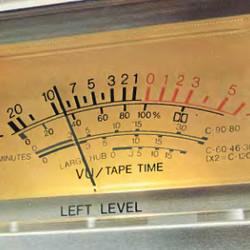
 3-Digıt Mechanical Counter
3-Digıt Mechanical Counter
 Digital Peak-Reading Meters
Digital Peak-Reading Meters
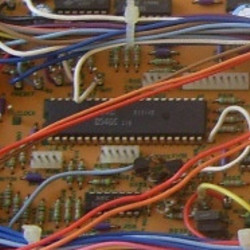
 Normal Frequency Bias Oscillator
Normal Frequency Bias Oscillator
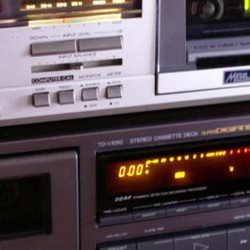
 Front Loading
Front Loading
 Orientation Left
Orientation Left
 Silver Finish
Silver Finish
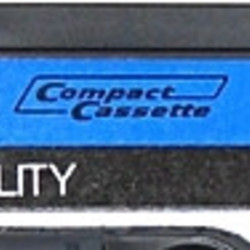
 Stereo
Stereo
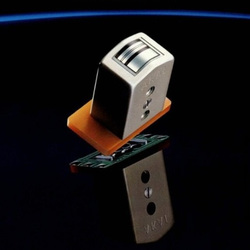
 4 Track / 2 Channel
4 Track / 2 Channel
 2 Head Desiǥn
2 Head Desiǥn
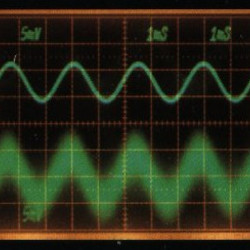
 DBX Type II Noise Reduction
DBX Type II Noise Reduction
 Dolby-B Noise Reduction
Dolby-B Noise Reduction
 MPX Filter
MPX Filter
 Subsonic Filter
Subsonic Filter
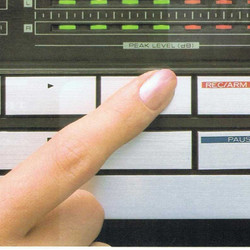
 Full Logic Transport Control
Full Logic Transport Control
 Record Mute
Record Mute
 Line / Mic Input Select
Line / Mic Input Select
 Timer Recording/Playback
Timer Recording/Playback
 Damped Eject
Damped Eject
 Memory Stop
Memory Stop
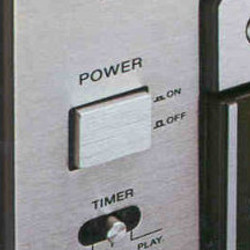
 Alternating Current
Alternating Current
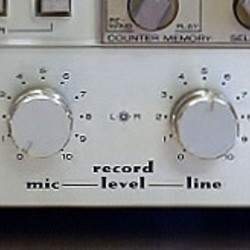
 Master Record Level Control
Master Record Level Control
 Output-Level Control
Output-Level Control
 Record Level Balance Control
Record Level Balance Control
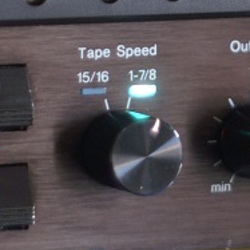
 1⅞ ips - 4.76 cm/s
1⅞ ips - 4.76 cm/s
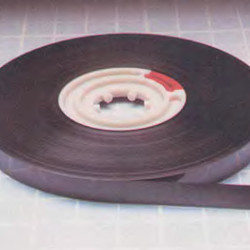
 Chrome Tape Capabilıty
Chrome Tape Capabilıty
 Metal Tape Capabilıty
Metal Tape Capabilıty
 Normal Tape Capabilıty
Normal Tape Capabilıty
 Manual Tape Type Selection
Manual Tape Type Selection

 Auto Shutoff
Auto Shutoff
 Belt Drive (Capsŧan)
Belt Drive (Capsŧan)
 Mechanical Tape Loading
Mechanical Tape Loading
 Sìngle Capsŧan Transport
Sìngle Capsŧan Transport
 2x Motor Mechanism
2x Motor Mechanism
Similar to Yamaha K-1d from the period 1981
Notice on copying anything
Copying Yamaha K-1d information from this site and use it in your auction or on your website is not allowed. A link to this page for Yamaha K-1d is allowed from your website or auction.
